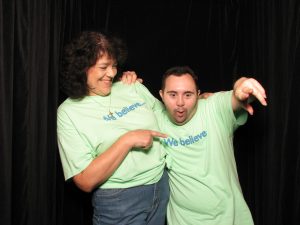Does your child have difficulty reacting to their environment and you aren’t sure what to do?
Your senses can provide such joy! Feeling the touch of a loved one, listening to music, embracing a family member, seeing a familiar face are pleasurable experiences that we might take for granted.
However, for some children as early as infancy, these sensory interactions are not joyful experiences. The inability to integrate the senses of touch, sound or movement may cause anxiety and are difficult for them to process. This will often result in behavior that will be puzzling for their parents.
Teli Occupational Therapist, Debbie Fekos, has had parents describe this behavior  as they see their child unable to respond in a normal manner and prevent their mastery of the activities of daily living.
as they see their child unable to respond in a normal manner and prevent their mastery of the activities of daily living.
Debbie is one of a limited number of occupational therapists in the Pittsburgh area that are certified in Sensory Integration and Praxis Testing (SIPT) to assess a child’s sensory difficulties. “This is the gold standard in sensory testing which evaluates the child across a number of key sensory components including touch, sight, ability to follow commands, motor and balance skills” says Debbie, “At teli, as part of understanding the many facets of children with disabilities, we listen to parents and hear them describe frequent meltdowns, inability to get out of the house, a child who doesn’t like to be touched, or over reacting to noise. These are red flags of potential sensory difficulties preventing a normal happy life for a child.”
Over her 18 years as an Occupational Therapist at teli, Debbie has been working with children with sensory difficulties who may be diagnosed with Autism, Aspergers or Pervasive Development Disorder (PDD), Down’s Syndrome, and Cerebral Palsy. Often the inability of a child to adjust to their environment may play out in reading and learning disabilities or behavioral issues that may be interpreted as just “bad behavior” when in fact, the child’s brain may not be able to organize all of the stimulation into normal activity.
Assessing the child is the first step in the process and in turn working with the child and the family and integrating self- regulation to help the child adjust and adapt to their environment.
To help the child’s brain organize the sensory system, sensory based activities are key, through the use of movement via swings, balls, and other specially designed therapeutic or recreational equipment and the use of auditory and tactile inputs as well.
While the SIPT assessments are typically performed beginning at 4 years of age, sensory-based strategies can be used successfully as part of early intervention therapy with infants, to calm what has traditionally be called “colic” as well as with to toddlers with developmental delays who are unable to regulate sleeping and eating patterns.
Debbie sees the ultimate goal of the therapy is to help the child be successful and happy, integrating into daily activities of living. “At teli, our sensory integration therapy is all about the child and the family and helping them deal with the challenges of sensory difficulties and providing them the tools to help children develop the necessary skills to prepare for rich and full lives.”
Learn more about teli’s Occupational Therapist, Debbie Fekos
Do you think your child might be dealing with sensory difficulties?
Review the following typical Sensory Integration Red Flags to look for:
“Red flags” for Infants
1. Dislikes being touched or cuddled by others
2. Has feeding challenges
3. Does not like being placed in certain positions (e.g., stomach, back).
“Red flags” for Toddlers
1. Avoids touching certain textures, hates to get messy (e.g., food, sand, water).
2. Is fearful of trying new motor activities. Prefers things to be the same and predictable (e.g., routine).
3. Prefers long sleeves and pants when it is warm outside and short sleeves when it is cold outside or prefers as little clothing as possible, even when it is cold.
“Red flags” for Preschoolers
1. Does not like playground equipment including swings, slides and merry-go-rounds.
2. Has loose joints, fatigues easily, is floppy or sits with legs in a W.
3. Struggles with fine motor tasks (e.g., holding pencil, buttoning).
Are you a health care professional with parents describing children with sensory difficulty behavior? teli can help!


